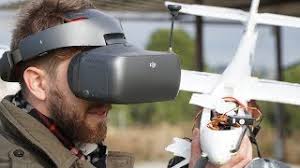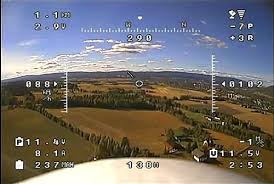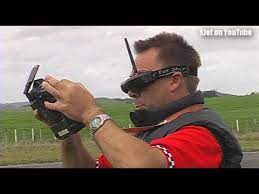Hello everyone! I am here again to make your life easier by helping you get what you want. Today we are gonna discuss about 5 best FPV RC Planes which will make your like more enjoyable and easier to live. So, hold your hearts and let’s get started on our journey.
Table of Contents
Introduction
The world of remote control (RC) planes has advanced significantly, and one of the most exciting developments in recent years is First-Person View (FPV) flying. FPV RC planes offer hobbyists and enthusiasts the thrill of piloting an aircraft from the cockpit’s perspective, without ever leaving the ground. Equipped with cameras and video transmission systems, FPV planes immerse you in the flight experience, giving you the sensation of soaring through the sky just like a real pilot.

In this comprehensive guide, we will explore the best FPV RC planes on the market, highlighting their key features, advantages, and how to select the best one for your flying needs. Whether you’re a beginner, an experienced RC pilot, or somewhere in between, this article will help you find the perfect FPV RC plane for your adventures in the sky.
What is FPV in RC Planes?
First-Person View (FPV) flying is a technology that allows the pilot to control an RC plane while seeing the flight from the aircraft’s point of view, as if they were sitting in the cockpit. This is accomplished using a small camera mounted on the plane, which transmits live video to a screen or FPV goggles worn by the pilot.

FPV has revolutionized the RC flying hobby, making it more immersive and engaging than traditional line-of-sight flying. Instead of controlling the plane from the ground and visually estimating its movement, you see everything from the plane’s perspective, navigating through the air with much more precision and excitement.
Factors to Consider When Choosing an FPV RC Plane
Before diving into the best FPV RC planes, it’s important to understand the factors that make a plane suitable for FPV flying. Here are key considerations to keep in mind:
1. Skill Level
Your experience with RC planes plays a major role in choosing the right FPV plane. Some models are specifically designed for beginners, while others are made for advanced pilots who want more speed, agility, and complex maneuvers.
2. Durability and Build Quality
Durability is key, especially if you’re still learning or intend to use the plane in rough environments. Crashes are inevitable in FPV flying, so it’s important to choose a plane made from tough materials like EPO foam or carbon fiber, which can withstand impacts.

3. Flight Time and Range
One of the most exciting aspects of FPV flying is exploring different landscapes. For this reason, you’ll want a plane with long flight times and a considerable range. Generally, planes with larger batteries offer longer flight durations, and FPV systems with strong signal transmission capabilities allow for greater range.
4. Camera Quality
The quality of your FPV experience depends largely on the camera. A high-resolution camera with a wide field of view will provide clearer and more immersive visuals. Some FPV planes come with built-in cameras, while others allow for upgrades to higher-quality options.

5. Ease of Assembly
Some FPV RC planes come pre-assembled, while others require varying levels of assembly. If you’re new to the hobby, a ready-to-fly (RTF) model may be the best choice, while experienced pilots might prefer a build-it-yourself kit for customization options.
6. Stability and Flight Control
FPV planes should have excellent stability, especially for beginners. Features like gyros, automatic stabilization, and smooth control systems are essential for a pleasant FPV experience. This is particularly important when flying in windy conditions.
Best FPV RC Planes: Top Picks for Every Skill Level
1. E-Flite Opterra 2m FPV Wing

The E-Flite Opterra 2m FPV Wing is a top-rated option for intermediate and advanced pilots looking for an immersive FPV experience. With its large 2-meter wingspan, this FPV plane is perfect for smooth, stable flights and long-range exploration. Its unique wing design, paired with optional flaps, gives it incredible control and performance in the air.
Key Features:
- High-quality FPV-ready design with multiple camera mount options.
- Durable EPO construction for resistance to crashes.
- Advanced AS3X stabilization technology for smooth flight.
- Roomy fuselage for extra electronics or a larger battery.
Why It’s Great for FPV: The Opterra’s large wingspan makes it perfect for cruising, offering excellent stability even in windy conditions. The design is optimized for FPV, with pre-molded slots for your camera and transmitter equipment. The AS3X stabilization feature adds to its performance, making your FPV experience feel seamless and realistic.
2. Skyhunter 1800mm FPV Long Range

The Skyhunter 1800mm FPV Long Range is specifically designed for long-range FPV flying, making it an excellent choice for enthusiasts who want to explore vast landscapes from the air. Its twin-boom design improves stability, while the spacious fuselage offers plenty of room for advanced FPV gear and larger batteries.
Key Features:
- Twin-boom design for improved stability.
- Large internal space for FPV components.
- Designed for long-range FPV flights (up to 10 km with proper equipment).
- Sturdy, crash-resistant build.
Why It’s Great for FPV: This plane’s long-range capability and impressive stability make it perfect for those who want to venture far from their take-off point. The Skyhunter’s ability to handle additional electronics and larger batteries ensures extended flight times, allowing for immersive, long-duration FPV flying sessions.
3. Volantex Ranger 757-4

For those new to FPV flying, the Volantex Ranger 757-4 is an excellent choice. This beginner-friendly plane comes equipped with a built-in FPV system and is known for its stability and easy handling. Its pusher-propeller design reduces damage risk during landings, making it ideal for novice pilots who are still learning the ropes.
Key Features:
- Ready-to-fly (RTF) package with a pre-installed FPV camera.
- Pusher-propeller design for crash protection.
- Beginner-friendly flight stabilization system.
- Lightweight, crash-resistant EPO material.
Why It’s Great for FPV: The Volantex Ranger is an excellent entry point into FPV flying due to its simplicity and durability. It comes ready-to-fly, meaning minimal setup is required, and the built-in camera is ideal for getting started with FPV without needing to buy additional equipment. Its stability and forgiving design make it a perfect option for beginners.
4. Zohd Nano Talon FPV

The Zohd Nano Talon FPV is a compact, easy-to-assemble plane that’s perfect for hobbyists looking for portability and performance. With its modular design, this plane is highly customizable, allowing pilots to upgrade its FPV components as needed. Despite its small size, it offers impressive stability and long-range capabilities, making it a great option for both beginners and experienced flyers.
Key Features:
- Modular design for easy customization and upgrades.
- Compact size with a 860mm wingspan.
- Stable flight performance with self-stabilizing flight modes.
- Easily detachable wings for portability.
Why It’s Great for FPV: The Zohd Nano Talon is a great balance of size, stability, and performance, making it suitable for pilots who want something portable without sacrificing FPV capabilities. Its modular design allows you to upgrade components as you advance, while the built-in stabilization features make it easy to fly, even for beginners.
5. Sonicmodell AR Wing Pro 1000mm FPV

The Sonicmodell AR Wing Pro is a versatile, high-performance FPV wing that has become a favorite among advanced RC flyers. Known for its agility and speed, the AR Wing Pro is perfect for pilots who want to push the limits of FPV flying. The airframe is designed to carry high-quality cameras and other FPV equipment, providing incredible footage from the sky.
Key Features:
- High-speed, agile design for experienced pilots.
- Wide camera bay for GoPro or other high-quality FPV cameras.
- Built-in carbon fiber tube for extra rigidity and durability.
- Modular wings for easy transport.
Why It’s Great for FPV: The AR Wing Pro offers an exceptional FPV experience for those looking for speed and agility. Its design allows for smooth, fast flights, while the built-in camera bay supports high-end action cameras, giving you stunning aerial footage. This plane is ideal for advanced pilots looking to perform high-speed maneuvers and tricks.
FPV RC Plane Accessories
To get the most out of your FPV RC plane, there are a few essential accessories to consider:
1. FPV Goggles or Monitors
FPV goggles or monitors are crucial for viewing the live video feed from your plane. Goggles offer a more immersive experience, but monitors are great for those who prefer a less isolating view.

2. High-Quality Transmitters and Receivers
A reliable transmitter and receiver system is essential for maintaining a strong video signal. Look for systems with low latency and long-range capabilities to get the most out of your FPV flights.
3. Extra Batteries
FPV flying can drain batteries quickly, especially with additional electronics like cameras and transmitters. Always have extra batteries on hand to maximize your flight time.
4. Upgraded Cameras
If your FPV plane doesn’t come with a high-quality camera, consider upgrading to one with better resolution and field of view. Popular choices include GoPro-style cameras or dedicated FPV models like the Runcam series.

How to Get Started with FPV RC Planes
If you’re new to the world of FPV RC planes, here’s a simple guide to get started:
1. Choose the Right Plane
Pick a plane based on your skill level. If you’re a beginner, go for an RTF model with built-in stabilization features. Experienced pilots might want something more customizable with higher speed and agility.
2. Set Up Your FPV System
Make sure your FPV camera is securely mounted and your video transmitter is properly configured. Test the video feed before your first flight to ensure everything is working as expected.
3. Start Small
It’s best to start with short flights to get used to controlling your plane from the FPV view. Once you’re comfortable, you can start flying further distances and exploring new terrains.

4. Fly in Open Areas
FPV flying requires a clear line of sight, so it’s best to fly in open areas free from obstacles like trees and buildings. This also reduces the risk of signal interference.
5. Practice and Improve
FPV flying takes practice, but with time, you’ll develop the skills needed to perform more complex maneuvers and explore new locations.
Conclusion
FPV RC planes are a thrilling way to experience the world from a pilot’s view, offering an immersive and dynamic flying experience unlike any other. Whether you’re just starting or are an experienced RC flyer, the planes listed above provide a variety of options suited to different skill levels and flying styles. By choosing the right plane and accessories, you can enhance your FPV experience and enjoy hours of exploration in the skies. Happy flying! For more information check out my website.




